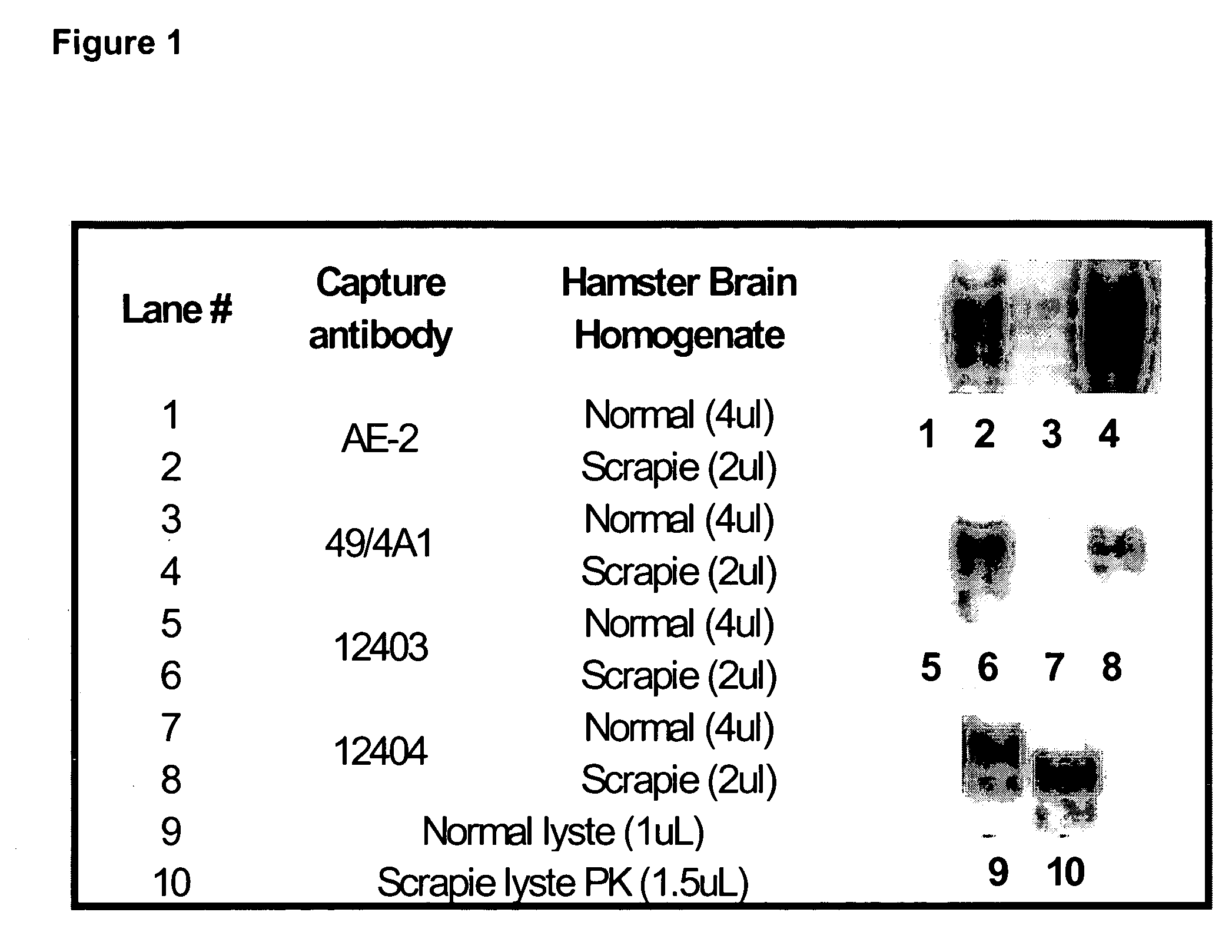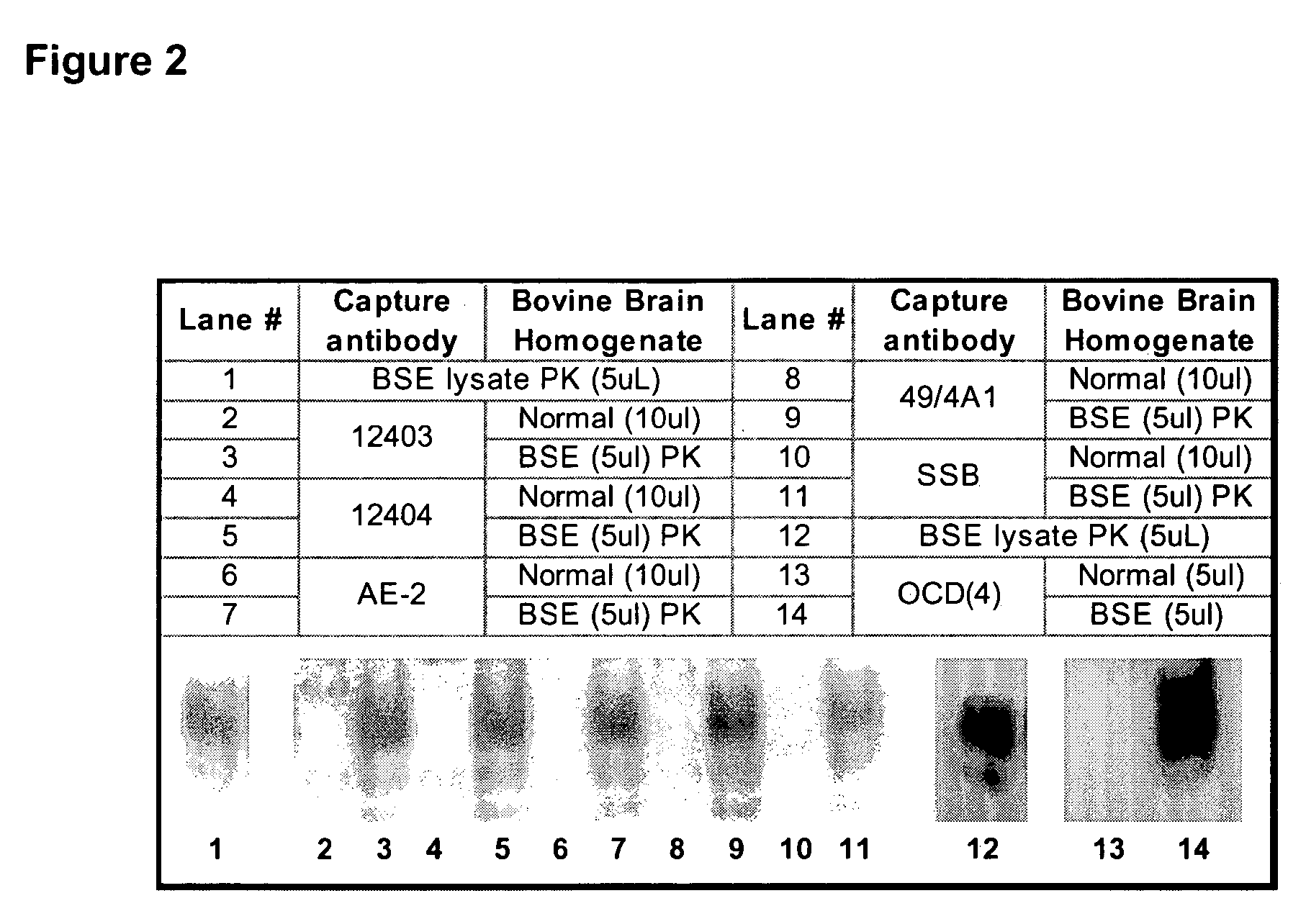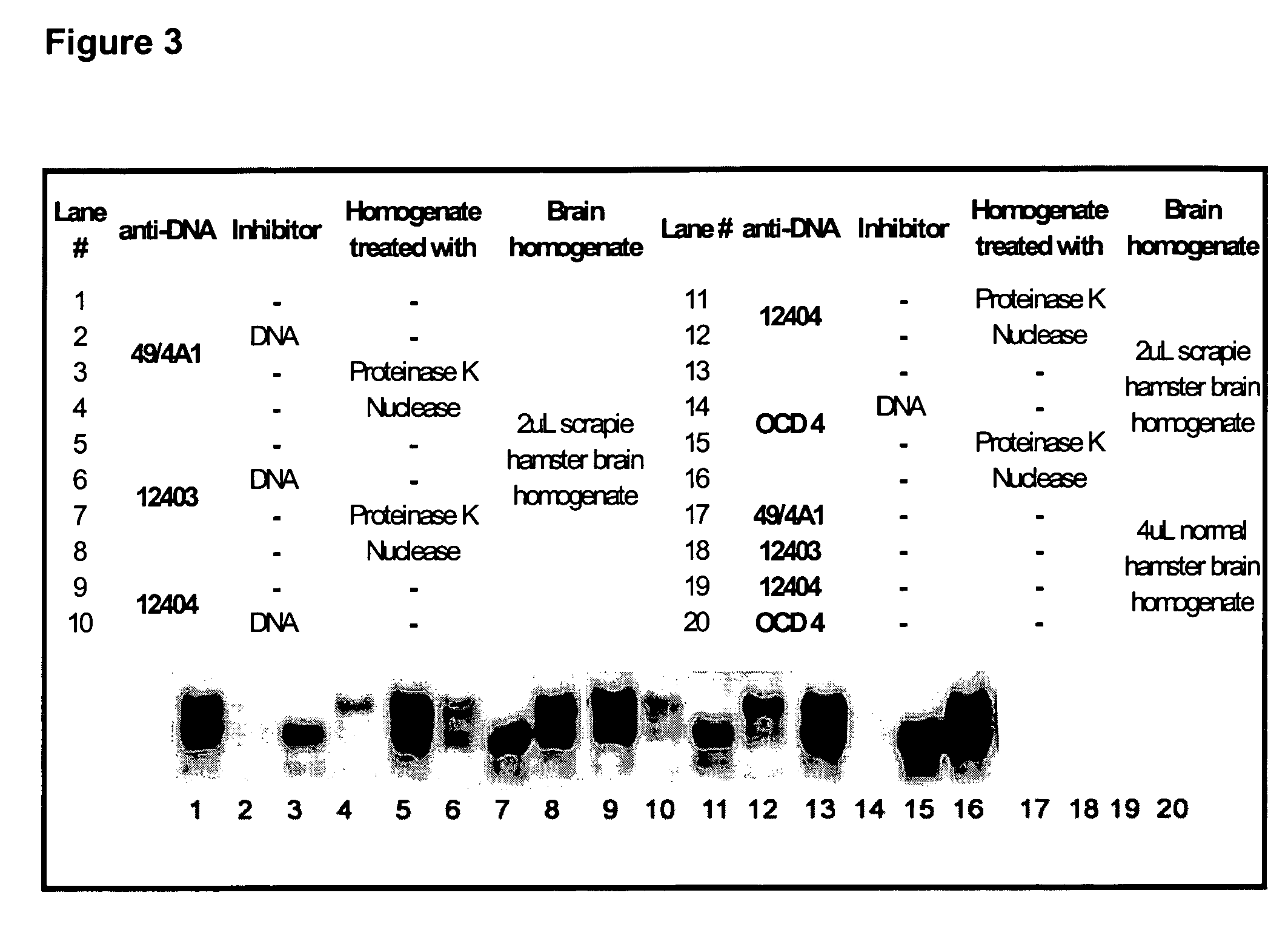Antibodies for discrimination of prions
a technology of antibodies and prions, applied in the field of antibodies for discrimination of prions, can solve the problems of inability to detect prions, and inability to detect scrapie infectivity to radiation, and achieve the effect of being resistant to pk digestion and nuclease treatment and being easily isolated
- Summary
- Abstract
- Description
- Claims
- Application Information
AI Technical Summary
Benefits of technology
Problems solved by technology
Method used
Image
Examples
Embodiment Construction
[0087]The term “sample” as used herein, refers to any substance, which may contain the analyte of interest. A sample can be biological fluid, such as whole blood or whole blood components including red blood cells, white blood cells, platelets, serum and plasma, ascites, urine, cerebrospinal fluid, and other constituents of the body which may contain the analyte of interest, such as brain homogenate. Optionally, samples may be obtained from water, soil, and vegetation. The term “patient” as used herein, refers to humans and / or animals.
[0088]Various immunoassay protocols are known and could be applied to the present invention. The assay can be carried out using any enzyme label which can be attached to the anti-prion antibody to form a labelled ligand. Enzymes such as oxidases, e.g., glucose oxidase, peroxidases, e.g., horseradish peroxidase (HRP), alkaline phosphatase and galactosidases are preferred labels. It is within the skill of one of ordinary skill in the art to determine a s...
PUM
 Login to View More
Login to View More Abstract
Description
Claims
Application Information
 Login to View More
Login to View More - R&D
- Intellectual Property
- Life Sciences
- Materials
- Tech Scout
- Unparalleled Data Quality
- Higher Quality Content
- 60% Fewer Hallucinations
Browse by: Latest US Patents, China's latest patents, Technical Efficacy Thesaurus, Application Domain, Technology Topic, Popular Technical Reports.
© 2025 PatSnap. All rights reserved.Legal|Privacy policy|Modern Slavery Act Transparency Statement|Sitemap|About US| Contact US: help@patsnap.com



